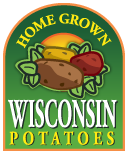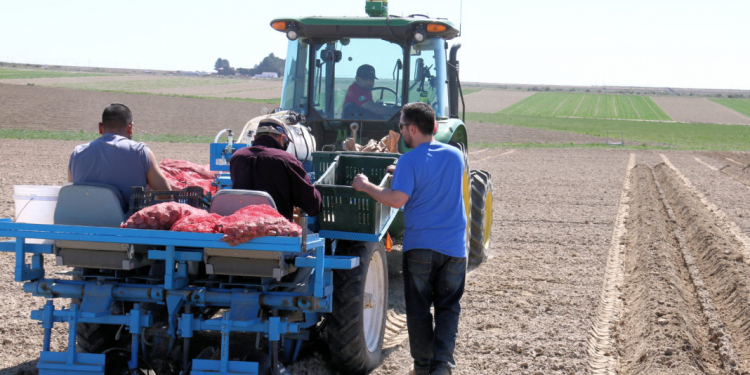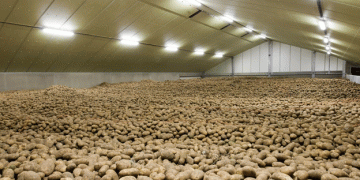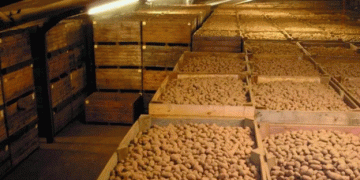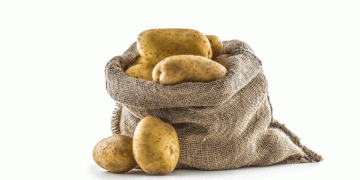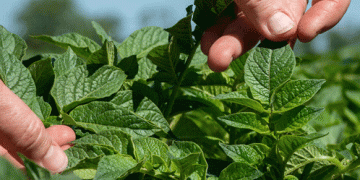Yi Wang, Assistant Professor & Extension Potato and Vegetable Production Specialist, University of Wisconsin Madison–
Over the last six months, I made several extension vlogs about different aspects of commercial potato production. These vlogs recorded commonpractices that Wisconsin growers use to produce good quality potatoes. Below are the YouTube video links:

- Seed potato cutting: https://www.youtube.com/watch?v=1HwMD20GPZA
- Potato planting: https://www.youtube.com/watch?v=7zix2Fz8QO0
- Potato harvesting and storage: https://www.youtube.com/watch?v=eUwtbw7rLxM&t=43s
For home gardeners who are interested in growing potatoes in your backyard, I uploaded an extension talk that I made for the 2021 Wisconsin Garden & Landscape Expo: https://www.youtube.com/watch?v=GWWG4O3etqE&t=4s And this is the Q&A webpage that includes more information about home potato growing in University of Wisconsin
So far the spring of 2021 has been pretty nice in Wisconsin. Weather has been decent to generate good soil temperature and good soil moisture. Growers have been planting since last week, which is a little earlier than average years. Looking at the weather forecast in the next two weeks, planting should go very smoothly and we all hope for another productive growing season. Lastly, some personal updates, I will get an ACL reconstruction in early May, so I will not be able to travel for at least four weeks after the surgery. I will try my best to provide vegetable updates on a regular basis while I’m recovering.
Amanda Gevens, Chair, Professor & Extension Vegetable Pathologist, University of Wisconsin Madison
Common Scab Biology and Management in Potatoes: Due to limitations in accessing PCNB (pentochloronitrobenzene or Blocker) at the current time in our region, I offer this update on at-plant treatments for reduction of common scab in potato. Crop rotation and varietal resistance are critical in
limiting common scab pressure. Within the field year, options to further limit common scab include certified seed with low or no common scab symptoms, and use of at-planting treatments which have demonstrated common scab control.
Common scab of potato is an intractable disease of the crop resulting in reductions in quality and often storability due to disrupted periderm. The disease is caused by soilborne, filamentous, Gram-positive bacteria in the genus Streptomyces. The bacteria produce spores and behave much like fungal pathogens. The Streptomyces genus includes species and strains that are pathogenic to potato, primarily Streptomyces scabies, but also species that are not pathogenic to potato. This disease is notoriously difficult to consistently manage with chemical or biological treatments; varietal resistance needs to be a foundational strategy in building an integrated management approach. While cultural practices including water and pH management can mitigate disease severity, no single practice completely controls the disease.
Treatments: Over the past 12 years, my program has been conducting research to better understand strategies to limit common scab severity. We, like many other applied pathology programs around the globe, have studied the impacts of pre-plant, seed-applied, in-furrow-applied, and in-season pesticides and other health-promoting compounds on common scab response in susceptible potato varieties. Results from most treatment schemes including biological and biopesticides are generally variable between years.
Blocker at planting, does have some consistent reduction in common scab, but never complete control. Bacillus species (ie: Double Nickel, Serenade) provided control of common scab, but with some variability between years. Despite the low return on discerning effective treatments for common scab, this work serves to continue exploration of a number of biological and biopesticidal treatments, as well as application timing, placement, and rate strategies. In my post as Extension Plant Pathologist, it can be just as important to identify treatments that do not work as it is to identify those that do. A list of relative effectiveness of the treatments that we’ve studied is provided below.
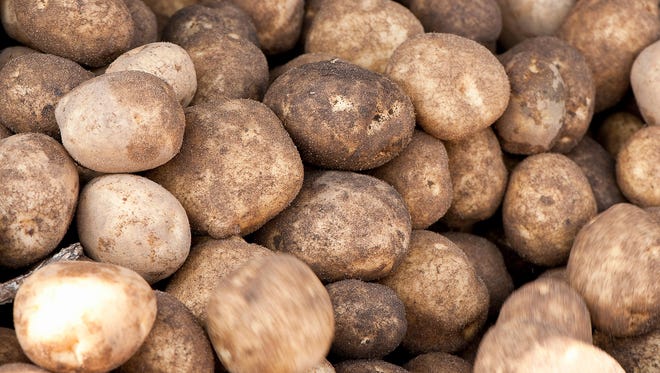
Pathogen biology: We’ve explored the diversity of Streptomyces species causing common scab on potato in Wisconsin revealing persisting predominance of S. scabies, improved understanding of the genetics of unique lesion phenotypes (netted, raised, pitted) and host resistance (in partnership with Plant Research Geneticist Dr. Shelley Jansky of UW-Horticulture/USDA), and we have helped growers address their
question of the role of cut versus whole seed on inoculum introduction to daughter tubers.
To sum here, there was a trend of less common scab on daughter tubers with cut seed versus whole seed; and, seed with 5 or 50% common scab severity resulted in similar incidence and severity of disease on daughter tubers.
